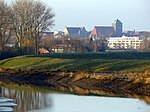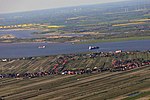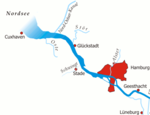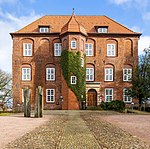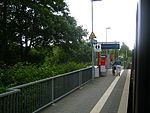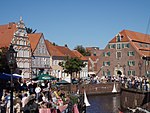Schilling Power Station

Schilling Power Station was an oil-fired power station in the proximity of the nuclear power station at Stade. It went into operation in 1960, was extended in 1962 and 1964, and was shut down in the 1980s. Since it principally served Hamburg north for the electricity supply of Hamburg and fed its current into the transformer station, the first overhead line crossing of the Elbe was built at that time at Stade, the Elbe Crossing 1. The buildings still exist today and are occasionally used for disaster control exercises. Due to the use of heavy fuel oil, a chimney was built with a height of 722 feet or 220 metres, it was 1962-1965 the tallest chimney worldwide. It was an open lattice structure with three separate exhaust pipes from the blocks. The structure was demolished in 2005.
Excerpt from the Wikipedia article Schilling Power Station (License: CC BY-SA 3.0, Authors, Images).Schilling Power Station
Bassenfleth, Samtgemeinde Lühe
Geographical coordinates (GPS) Address Nearby Places Show on map
Geographical coordinates (GPS)
| Latitude | Longitude |
|---|---|
| N 53.616944444444 ° | E 9.5338888888889 ° |
Address
Bassenfleth
21723 Samtgemeinde Lühe, Bassenfleth
Lower Saxony, Germany
Open on Google Maps

